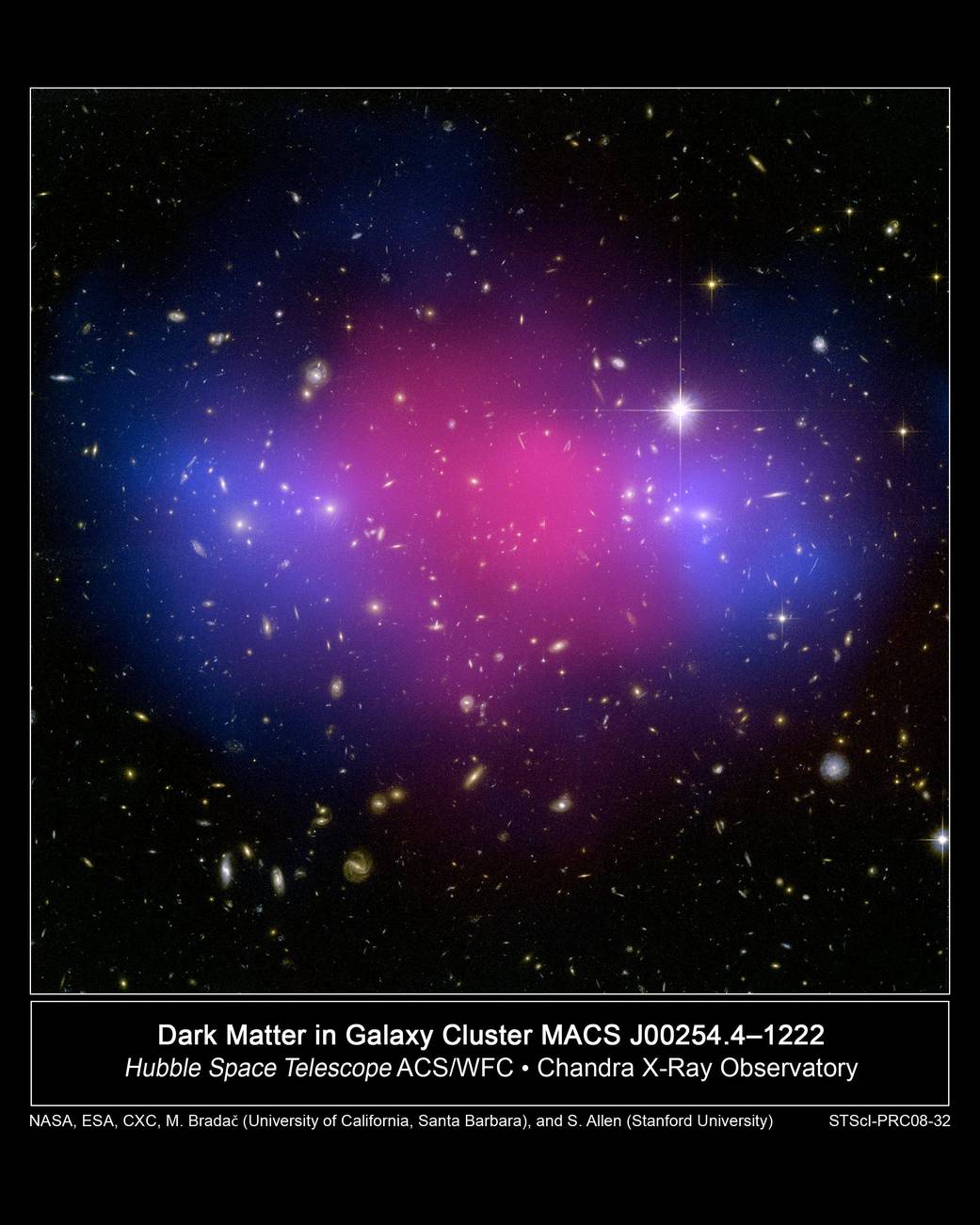A powerful collision of galaxy clusters has been captured by NASA’s Hubble Space Telescope and Chandra X-ray Observatory. This clash of clusters provides striking evidence for dark matter and insight into its properties.
The observations of the cluster known as MACS J0025.4-1222 indicate that a titanic collision has separated the dark from ordinary matter and provide an independent confirmation of a similar effect detected previously in a target dubbed the Bullet Cluster. These new results show that the Bullet Cluster is not an anomalous case.
MACS J0025 formed after an enormously energetic collision between two large clusters. Using visible-light images from Hubble, the team was able to infer the distribution of the total mass – dark and ordinary matter. Hubble was used to map the dark matter (colored in blue) using a technique known as gravitational lensing. The Chandra data enabled the astronomers to accurately map the position of the ordinary matter, mostly in the form of hot gas, which glows brightly in X-rays (pink).
As the two clusters that formed MACS J0025 (each almost a quadrillion times the mass of our sun) merged at speeds of millions of miles per hour, the hot gas in the two clusters collided and slowed down, but the dark matter passed right through the smashup. The separation between the material shown in pink and blue therefore provides observational evidence for dark matter and supports the view that dark-matter particles interact with each other only very weakly or not at all, apart from the pull of gravity.Image Credit: NASA, ESA, CXC, M. Bradac (University of California, Santa Barbara), and S. Allen (Stanford University)
2 min read




























